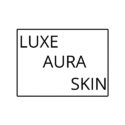Understanding Retinol and Its Benefits for Skin

Retinol, a derivative of vitamin A, is recognized for its significant benefits in skincare, particularly in the treatment of wrinkles and signs of aging, starting around your eyes. Originating from the need to address various skin concerns, retinol has gained prominence in dermatology and cosmetic formulations due to its efficacy in promoting skin health. Its ability to encourage cellular turnover makes it a powerful ally in the quest for youthful skin.
At the cellular level, retinol works by stimulating the production of new skin cells while encouraging the shedding of dead cells. This process not only helps to minimize fine lines and wrinkles but also enhances overall skin texture and tone. As retinol penetrates the skin, it converts to retinoic acid, which actively promotes collagen synthesis. Enhanced collagen production contributes to firmer, more resilient skin, thereby reducing the visibility of age-related changes.
Besides combating wrinkles, retinol offers several other benefits. It helps in diminishing age spots, smoothing rough patches, and reducing the size of pores. By improving skin texture, retinol creates a more even complexion, making it a favored option for those seeking to revitalize their appearance. It is also important to note that while retinol provides numerous advantages, it may cause sensitivity, irritation, or dryness, particularly to individuals with sensitive skin. Gradual introduction into the skincare routine is often recommended to allow the skin to acclimate to its effects.
Furthermore, using retinol cream necessitates a commitment to sun protection. Retinol can increase photosensitivity, making it crucial to apply a broad-spectrum sunscreen daily. In summary, retinol is a potent ingredient with numerous benefits for the skin, particularly in the fight against wrinkles, making it a valuable addition to anti-aging skincare regimens.
Leona’s Choice
- RETINOL CREAM TO THE MAX: This retinol night cream penetrates deeply for overnight transformation, serving as a powerful…
- FRAGRANCE-FREE FACIAL MOISTURIZER: Enjoy a face moisturizer that absorbs quickly, leaving no greasy residue, perfect for…
- MAXIMIZED HYDRATING FORMULA: Enhanced with 20% more Retinol 24 complex and 2X the Niacinamide as Base Retinol24, wake up…
Retinol: What It Is and Why Your Skin Loves It
Retinol, a form of vitamin A, is one of the most celebrated ingredients in skincare — especially when it comes to tackling wrinkles and other signs of aging. Originally developed to address a variety of skin concerns, retinol has earned a top spot in dermatology and beauty products thanks to its proven ability to boost skin health. Its main superpower? Encouraging faster cell turnover, which helps reveal fresher, younger-looking skin.
On a deeper level, retinol stimulates the growth of new skin cells while speeding up the shedding of old ones. This process smooths fine lines, softens wrinkles, and improves skin texture and tone. Once absorbed, retinol is converted into retinoic acid — the active form that triggers collagen production. More collagen means firmer, plumper, and more resilient skin, which naturally helps reduce visible signs of aging.
But its benefits don’t stop there. Retinol can fade age spots, smooth rough patches, and even shrink enlarged pores, resulting in a more even and radiant complexion. That said, it’s not without side effects — some people experience dryness, redness, or irritation, especially at the start. That’s why it’s best to introduce retinol gradually so your skin has time to adjust.
One important note: retinol makes your skin more sensitive to sunlight. Daily use of a broad-spectrum sunscreen is a must to protect your results and prevent damage.
In short, retinol is a powerhouse ingredient that not only smooths wrinkles but also improves overall skin quality, making it a star player in any effective anti-aging routine
How to Apply Retinol Cream the Right Way
Using retinol cream in your skincare routine can do wonders, but it’s important to apply it correctly to get the best results and avoid irritation. Start by cleansing your face thoroughly with a gentle cleanser suited to your skin type. This removes makeup, dirt, and excess oil so the retinol can absorb properly.
After cleansing, apply a moisturizer. Adding this step before retinol helps protect your skin and reduces the risk of irritation—especially if you’re new to it. Once the moisturizer has absorbed, apply a pea-sized amount of retinol cream evenly over your face, steering clear of sensitive areas like the eyes and mouth.
If you’re just starting out, use retinol twice a week and slowly build up to every other night or nightly, depending on how your skin responds. Even experienced users should watch for dryness, redness, or peeling. If these signs appear, cut back on how often you use it or switch to a lower strength.
When using other active ingredients like AHAs or vitamin C, don’t pile them on at the same time as retinol. Instead, use them at different times of the day or on alternate days. This reduces irritation and allows each product to work more effectively. With the right approach, retinol can help soften wrinkles, improve skin texture, and give you a youthful glow.
What do you think ?
Your opinion and ideas are important to me! On this page, you’ll find a selection of products organized into different budget categories – from affordable picks to high-end options.
Each item has been carefully chosen to help you make the best choice, no matter your budget. Have you tried any of these products, or do you think something’s missing? Feel free to leave a comment or share your advice – your input is greatly appreciated and helps other visitors too!

